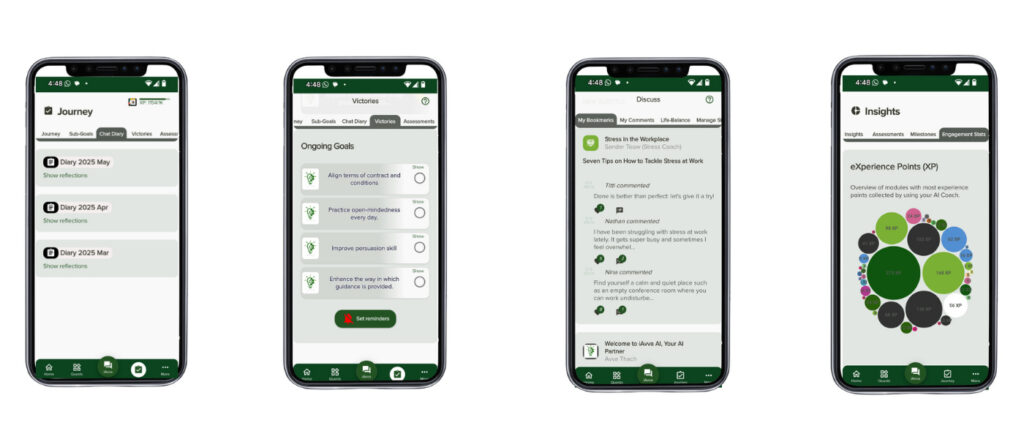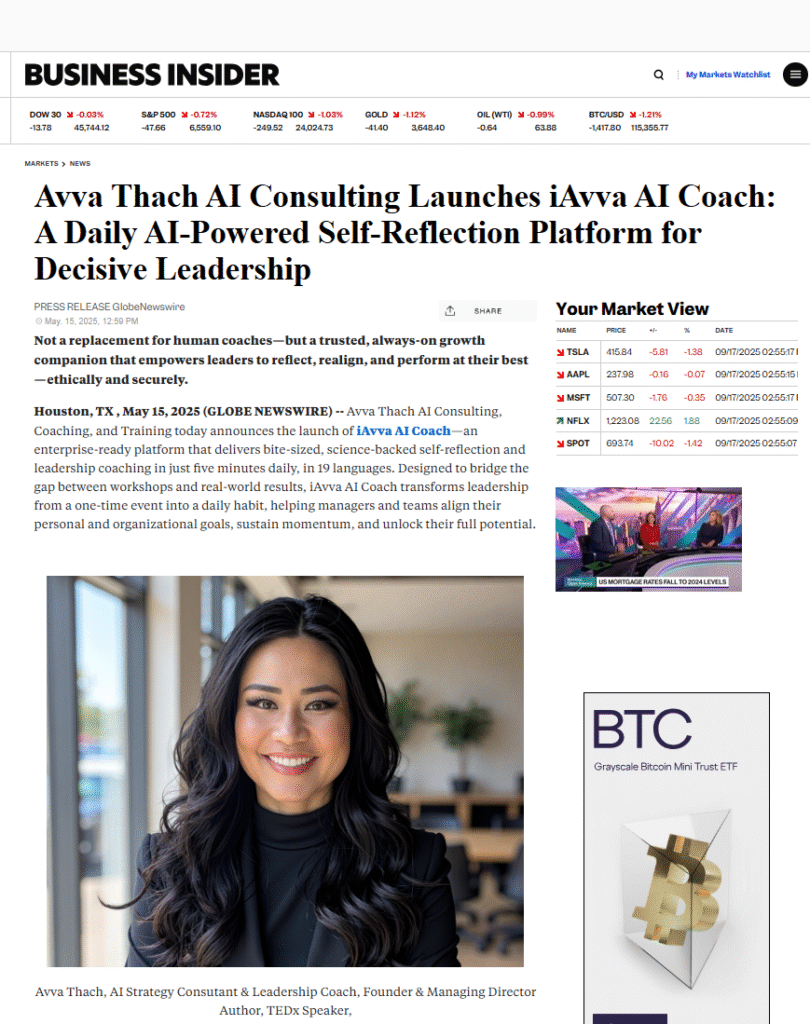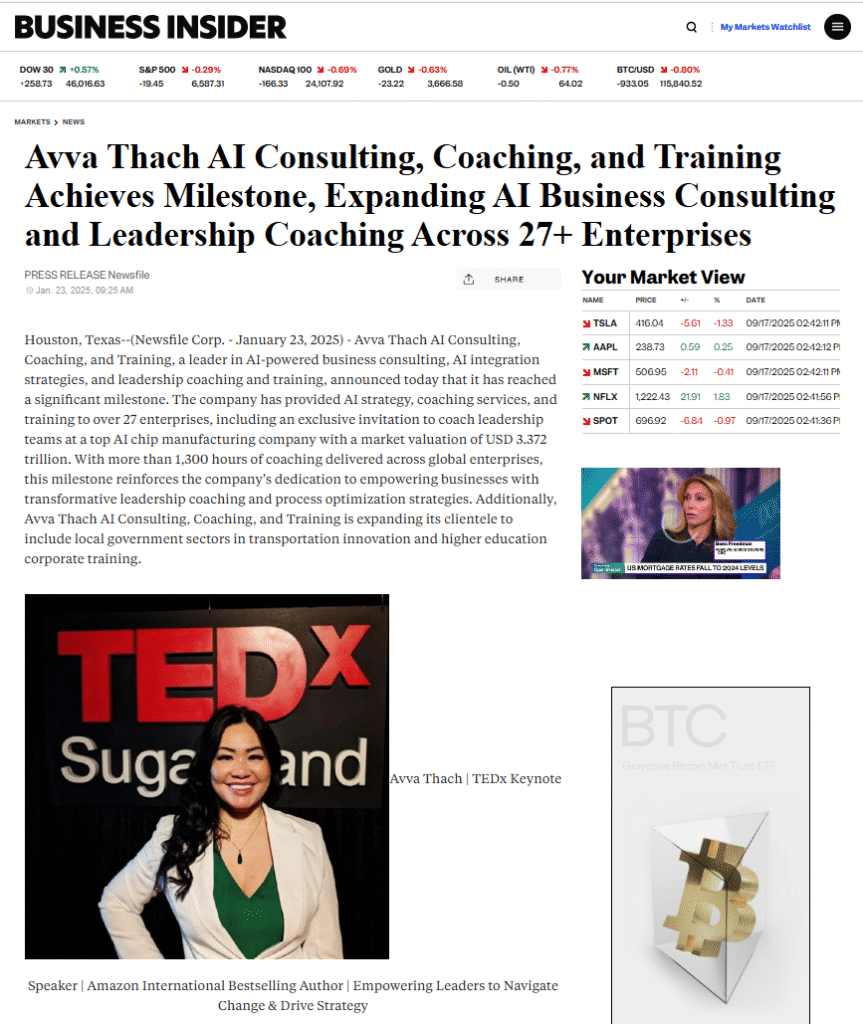Choosing the Right Software IT Company: A Decision Maker’s Guide
Introduction
Choosing a software IT company is like picking a partner for a dance-one misstep, and you could find yourself stepping on toes instead of gliding across the floor. Did you know that 75% of companies believe effective training and coaching are essential for successful digital transformation? (PwC) This statistic highlights a critical truth: the right IT solutions provider can make or break your organization’s journey into the digital age.
Picture this: You’re sitting in a meeting, staring at a presentation filled with flashy graphics and buzzwords like “cloud computing” and “agile software development.” Everyone seems excited, but you’re left wondering if this is just another tech fad. The pressure to choose wisely is real. A poor decision could lead to wasted resources, missed opportunities, and an even more complex IT landscape.
The stakes are high! According to recent studies, companies that invest in custom software solutions see an average ROI of 300%. Choosing the right software development company isn’t just about picking a vendor; it’s about finding a technology innovation partner who understands your unique needs.
The importance of selecting the right software IT company cannot be overstated. With so many options out there-from enterprise application development firms to SaaS development companies-the choices can be dizzying. Each has its strengths and weaknesses, and navigating this landscape requires clarity about what your organization truly needs.
Let’s not sugarcoat it: decision-making challenges for executives are plentiful. You might face pressure from stakeholders demanding quick results while simultaneously dealing with an ever-evolving tech landscape. The fear of making the wrong choice can be paralyzing, especially when considering factors like cost vs. value or potential hidden costs lurking in contracts.
The twist? Many executives overlook the culture fit between their organization and potential IT partners. A mismatch here can lead to friction that stifles innovation rather than fostering it. So how do you sift through the noise? By understanding your specific needs, assessing current capabilities, and defining what success looks like for your software solutions.
In this guide, we’ll delve into crucial factors to consider when choosing your software IT company, helping you navigate through interviews, proposals, and evaluations with confidence. Ready to take the plunge into transforming your business with bespoke software development? Let’s get started!
Understanding Your Needs
Imagine investing time and resources into a software IT company only to realize they don’t quite get your business. It’s like ordering a gourmet meal and getting a microwaved frozen dinner instead. The stakes are high, especially when cloud computing is projected to be an $832.1 billion market in the US by 2025
(Statista)
. You need to ensure that the solutions you choose align with your unique business requirements.
Your first step? Identifying specific business requirements. This isn’t just about listing features; it’s about understanding the pain points your organization faces and how technology can alleviate them. Think of it as defining your software wishlist-what must-have features will drive efficiency, enhance user experience, or support your digital transformation journey?
Identifying Specific Business Requirements
Start by gathering insights from stakeholders across various departments. This could mean chatting with sales teams to understand their lead tracking needs or discussing with customer service about common client issues that could be resolved through better software solutions. Here are some questions to guide this process:
- What tasks consume the most time for your team?
- Are there recurring issues that frustrate customers or employees?
- What data do you need to make informed decisions?
- How do current tools limit your team’s performance?
A clear picture of these requirements will help you articulate what you expect from a software IT company. Remember, clarity is key-don’t let vague ideas cloud your vision.
Assessing Current IT Capabilities and Gaps
The next step is assessing what you already have in place. Conduct an audit of existing systems and processes. What works? What doesn’t? You might find that while some systems are robust, others are outdated or barely functional.
This assessment should include:
- Current software performance: Are there frequent downtimes or slow processing times?
- User feedback: What do users think about existing tools? A simple survey can reveal valuable insights.
- Integration capabilities: How well do current systems communicate with each other?
A comprehensive understanding of these gaps will not only inform your choice of a software development company, but also guide discussions on necessary improvements during consultations.
Defining Success Criteria for Software Solutions
Your final task in this phase is defining what success looks like for your new software solutions. This isn’t just about hitting deadlines; it’s about measurable outcomes that align with broader business objectives.
- User adoption rates: How quickly will employees embrace the new system?
- Efficiency gains: What percentage improvement in task completion times are you aiming for?
- ROI benchmarks: What financial returns do you expect within specific timeframes?
The interesting part? Establishing these criteria upfront makes it easier to evaluate potential partners later on. If they can’t meet these defined metrics, they’re likely not the right fit.
Your organization deserves tailored solutions that propel growth rather than hinder progress. By understanding your needs thoroughly, you’re setting yourself up for success in selecting the perfect IT solutions provider.
Key Factors to Consider When Choosing a Software IT Company
Choosing the right software IT company is like finding the perfect pair of shoes: if they don’t fit well, you’ll be limping through your project instead of strutting confidently. Consider this: 93% of companies are currently undergoing digital transformation, yet many struggle with execution because they picked the wrong partner for the journey
(International Data Corporation)
. The right IT solutions provider can elevate your business, while the wrong one can lead to wasted time and resources.
Let’s break down the key factors that will help you avoid stepping on those metaphorical toes:
Industry Expertise and Experience
The tech landscape is vast and varied. You wouldn’t hire a chef to run your car repair shop, right? Similarly, selecting a software development company with industry-specific experience is crucial. Look for firms that have successfully tackled challenges similar to yours in your sector. For example, if you’re in healthcare, a company with experience in enterprise software development for medical applications will understand regulatory requirements and patient data security better than others.
Pro Tip: Request case studies or examples of past projects relevant to your industry. This will give you insight into their problem-solving capabilities and adaptability.
Technical Capabilities and Innovation
If you’re not keeping up with technological advancements, you’re already behind. A good software engineering firm should not only understand current technologies but also be forward-thinking about future trends like cloud computing services, AI integration, and cybersecurity measures. Ask potential partners about their approach to innovation-do they utilize agile methodologies? Are they familiar with cutting-edge tools?
- Ask about their tech stack: What programming languages and frameworks do they prefer?
- Inquire about their R&D efforts: Are they investing in new technologies or methodologies?
- Check their commitment to cybersecurity: With breaches costing U.S. businesses an average of $4.24 million in 2021, this is non-negotiable.
Cultural Fit and Alignment with Organizational Values
A mismatch in culture can lead to friction faster than you can say “scope creep.” It’s essential that your chosen IT service provider aligns not just technically but also culturally with your organization’s values and work style. Do they prioritize collaboration? Are they flexible enough to adapt to changes-like when stakeholders suddenly decide they want more features after seeing the first draft?
Cultural assessment tip: During interviews, pay attention not only to what is said but how it’s said. Are team members enthusiastic? Do they communicate openly? Their responses can reveal a lot about how well they’ll fit into your organization.
Reputation and Client Testimonials
The buzz around a company often says more than their flashy website ever could. Reputation matters! Look for client testimonials that provide insight into their reliability and service quality. A few glowing reviews are nice, but what do long-term clients say? Have previous customers experienced consistent support from this custom software solutions provider? If possible, reach out directly to past clients for candid feedback.
- Avoid companies with red flags:
- Poor communication during the proposal process.
- Lack of transparency regarding pricing or project timelines.
- No clear processes for handling disputes or changes in scope.
- A strong reputation:
- A solid track record of delivering projects on time and within budget.
- A high client retention rate indicating satisfaction over time.
- A willingness to provide references without hesitation.
Your choice of a software IT company should feel like finding a partner who complements your strengths while addressing weaknesses-think Batman and Robin rather than oil and water!
The Evaluation Process
Imagine this: You’ve narrowed down your options to a few software IT companies, but now you’re staring at a mountain of proposals, each promising the moon. It’s like trying to pick the best dessert at a buffet; they all look delicious, but only one will satisfy your cravings. Here’s the kicker: 70% of software projects fail due to poor requirements gathering and evaluation processes
(Standish Group)
. So, how do you avoid being part of that statistic?
The evaluation process is your golden opportunity to ensure you choose a partner who aligns with your vision and can deliver on their promises. It’s not just about picking a vendor; it’s about finding a technology ally who will help you thrive in the digital landscape.
Creating a Shortlist of Potential Companies
Start with research. The internet is your best friend here-think LinkedIn, tech blogs, and industry forums. Look for IT solutions providers that have experience in your industry and can demonstrate success through case studies or testimonials. A solid shortlist should ideally include:
- Companies with relevant experience: Focus on those that have tackled projects similar to yours.
- Diverse technical capabilities: Ensure they offer services that match your needs, from custom software solutions to cloud-based solutions.
- A solid reputation: Look for companies with positive reviews and testimonials from past clients.
This phase is crucial-don’t rush it! A little extra time spent here can save you headaches down the road.
Conducting Interviews and Assessments
You’ve got your shortlist; now it’s time for the face-to-face (or Zoom-to-Zoom) chats. This is where you dig deeper into what each potential partner brings to the table. Here are some questions to guide these discussions:
- What is their development process like? Are they following agile methodologies? This can be a game-changer in terms of flexibility and responsiveness.
- How do they handle project management? Understanding their approach can reveal how well they’ll adapt to changes or challenges.
- What kind of support do they offer post-launch? A great product means nothing if support falls short when issues arise.
A good tip? Pay attention to how well they communicate. Are they transparent about their processes? Do they listen actively? These traits are often indicative of how well they’ll collaborate during the project.
Requesting Proposals and Demos from Shortlisted Companies
This is where things get exciting! Request detailed proposals from each company on your shortlist. Look for clarity in their responses-vague proposals are often a red flag. Key elements to evaluate include:
- Project scope: Does it align with what you need?
- Timeline: Are their deadlines realistic? Remember, Rome wasn’t built in a day!
- Pricing structure: Ensure there are no hidden costs lurking in fine print-transparency here is crucial!
Demos are also invaluable during this stage. Watching potential partners showcase their products gives you insights into usability and functionality. Consider how user-friendly their interface is; after all, if your team struggles with it, no amount of fancy features will save the day!
Your goal during this evaluation process is to find not just any software IT company, but one that resonates with your organization’s culture and objectives-a true partner in innovation rather than just another vendor.
Assessing Cost vs. Value
Think you can just pick the cheapest software IT company and call it a day? Think again! A penny saved today could cost you a fortune tomorrow. In fact, 70% of organizations report that they encounter hidden costs in software projects, leading to budget overruns and project delays
(Standish Group)
. The harsh reality is that prioritizing cost over value can set you back more than you ever anticipated.
Let’s take a moment to visualize this: You’re at an all-you-can-eat buffet. You see the $5 plate of pasta, but right next to it is the $20 gourmet dish that promises a culinary experience like no other. Which one will leave you satisfied? Spoiler alert: It’s probably not the cheap pasta. The same concept applies when choosing an IT solutions provider.
When assessing cost versus value, remember: investing in quality software solutions is not just about upfront costs. It’s about long-term ROI, efficiency gains, and ultimately how well your chosen partner can help your business scale.
Understanding Pricing Models in the Software Industry
Diving into pricing models is like entering a labyrinth-there are fixed prices, hourly rates, and value-based pricing structures that can make your head spin. Here’s the thing: each model has its pros and cons depending on your project scope and timeline.
- Fixed Price: Great for well-defined projects but can lead to scope creep if requirements change.
- Hourly Rate: Offers flexibility but may end up costing more if not managed carefully.
- Value-Based Pricing: Aligns costs with the value delivered but requires clear metrics for assessment.
The interesting part? Many companies fail to fully understand these pricing models before signing contracts. This lack of clarity often leads to frustration down the line when unexpected costs arise or deliverables are misaligned with expectations.
An Overview of Potential Hidden Costs
You might think you’ve got everything covered with your initial budget, but hidden costs can sneak up on you faster than a cat meme goes viral. Some common culprits include:
- Integration Costs: New software often has to play nice with existing systems; sometimes this isn’t as easy as it sounds!
- Training Expenses: Your team needs to know how to use new tools effectively; don’t underestimate training needs!
- Maintenance Fees: Ongoing support and updates can add up quickly-what looks like a low initial price might become costly over time.
The takeaway? Always ask potential partners about their experience with hidden costs. A transparent software development company should be able to provide insights into common pitfalls they’ve encountered in past projects.
If you’re not measuring ROI before diving into a new partnership, you might as well be throwing darts blindfolded. Evaluating potential returns based on projected outcomes ensures that you’re making an informed decision rather than gambling with your budget. Here are some metrics to keep an eye on:
- User Adoption Rates: How quickly will your team embrace the new system?
- Efficiency Gains: What percentage improvement do you expect in task completion times?
- Total Cost of Ownership (TCO): Consider all costs associated with ownership over time-not just initial expenses!
The kicker? Establishing these metrics upfront allows you to hold vendors accountable later on. If they promise improvements but fail to deliver measurable results, it’s time for some tough conversations-or perhaps even looking elsewhere.
Your organization deserves solutions that provide real value-not just shiny features at low prices. By assessing cost versus value thoughtfully, you’ll set yourself up for success in selecting the perfect IT consulting services provider.
The Importance of Support and Training Services
Here’s a reality check: 75% of companies believe effective training and coaching are essential for successful digital transformation
(PwC)
. Yet, many organizations dive headfirst into new software solutions without considering the crucial support and training that can make or break their success. It’s like buying a fancy new car but skipping the driving lessons-good luck navigating those winding roads!
Key Insight: Ongoing support and comprehensive training can significantly enhance user adoption rates, ensuring your investment translates into real value.
Let’s break this down. When you partner with a software IT company, it’s not just about the shiny new software; it’s about the entire ecosystem that surrounds it. Think of your chosen IT solutions provider as your trusty guide through a dense tech jungle. Without them, you might find yourself lost among the vines of confusion and frustration.
The Role of Ongoing Support in Successful Implementation
Imagine launching a new software system only to discover that your team has questions galore-like, “How do I even log in?” or “Why is this button not working?” Without proper support, those questions can turn into roadblocks that stall productivity. A solid support system from your software development company ensures that help is just a call away when issues arise.
- Immediate Assistance: Quick access to troubleshooting can prevent minor hiccups from escalating into major headaches.
- Regular Updates: Software evolves, and so should your understanding. Ongoing support includes updates on new features or best practices.
- User Feedback Integration: A responsive IT partner will take user feedback seriously, continuously improving the software experience based on actual usage.
The interesting part? Companies that invest in ongoing support report higher satisfaction rates among users, leading to greater overall efficiency. If you’re going to invest in custom software solutions, make sure ongoing support is part of the package!
Training Options for Your Team to Maximize Software Usage
- Onboarding Sessions: Start with comprehensive onboarding sessions tailored to different user roles within your organization. This ensures everyone knows how to use the tools relevant to their tasks.
- Hands-On Workshops: Interactive workshops allow team members to practice using the software in real-time scenarios, which reinforces learning and builds confidence.
- E-Learning Resources: Offering online tutorials or access to learning management systems gives employees flexibility in how they learn at their own pace.
A common misconception is that once you implement a software solution, training is optional or secondary. Wrong! Investing in thorough training can lead to higher adoption rates and faster realization of benefits from your new technology. Remember: A well-trained team is an empowered team!
Your organization will thrive when both support and training are prioritized as integral components of any software implementation strategy. Choosing an IT consulting services provider that emphasizes these elements could be the difference between success and stagnation in your digital transformation journey.
Navigating Contracts and Agreements
Signing a contract with a software IT company can feel like jumping into the deep end of a pool without checking for water first. It’s exhilarating yet nerve-wracking, especially when you consider that 70% of software projects fail due to poorly defined agreements and misunderstandings
(Standish Group)
. If your contract isn’t solid, you might find yourself floundering when things get tough.
Here’s the crux: A well-structured contract can save you from future headaches. Think of it as your safety net, ensuring that both parties are clear on expectations, deliverables, and responsibilities.
The first step in navigating this often murky territory is to ensure that the agreement covers all bases. This means not just the basic terms but also the nitty-gritty details that can make or break your project. Here are some key elements to include:
Key Elements to Include in Your Contract
- Scope of Work: Clearly define what is included in the project. Vague descriptions can lead to scope creep faster than you can say “add more features.”
- Timeline and Milestones: Set realistic deadlines with specific milestones to keep everyone accountable. Remember, Rome wasn’t built in a day!
- Payment Terms: Outline how and when payments will be made. Will it be milestone-based or upon completion? Transparency here prevents disputes later.
- Intellectual Property Rights: Specify who owns what once the project is completed. This is crucial in protecting your innovations.
- Termination Clauses: Include conditions under which either party can terminate the agreement without penalties. Better safe than sorry!
- Support and Maintenance: Don’t forget to outline post-launch support expectations! What happens if bugs arise or users need training?
The interesting part? Many companies overlook these details until it’s too late. It’s like assembling IKEA furniture without reading the instructions; you might end up with a lopsided bookshelf instead of a functional piece.
Avoiding Common Pitfalls
- Lack of Clarity: Ambiguities can lead to misunderstandings down the line. Ensure every term is defined clearly.
- No Exit Strategy: Without an exit strategy, you could find yourself stuck with a partner that isn’t delivering value.
- Poor Communication Channels: Establish how communication will occur throughout the project-regular check-ins prevent surprises!
Your contract should serve as a roadmap for your partnership with your chosen IT solutions provider. By outlining expectations clearly, you’re setting both parties up for success rather than conflict.
The final step? Once everything is drafted, don’t just sign on the dotted line blindly! Have legal counsel review it to ensure all bases are covered. This small investment could save you from significant losses later on.
















Leave a Reply